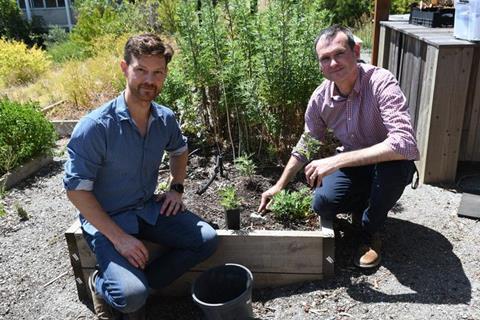Focusing on four common diseases – diabetes, heart disease, depression and bowel cancer – new Flinders University research provides insights into the importance of a healthy microbiome balance in the human gut and in the environment.

The international study compares case studies of type 2 diabetes, atherosclerotic cardiovascular disease, anxious-depressive behaviours and colorectal cancer and found patterns in the disease-associated gut microbiomes that could inform new cost-effective treatments based on diet, lifestyle and environmental microbiome exposures.
The research has uncovered a new approach to describing and measuring the health of gut and soil microbiomes applicable in studies of human health and ecosystem quality, says lead author, Flinders Research Fellow in Restoration Ecology Dr Craig Liddicoat, from the College of Science and Engineering.
Genetic capacity
“While we usually study the DNA of microbiomes to establish their profile and role, we have relatively limited understanding of what connects health and disease to the vast diversity of microbes we see in nature, and that live on and in our bodies,” he says.
“We have far greater knowledge of health-associations for chemical compounds.
“With this in mind, the research team examined metagenomes – which represent the genetic capacity of entire microbial communities – to see if there were differences in their capacity to process an array of compounds, in health versus disease, and with changes in ecosystem health.”
Compound processing potential
The work published in Science of the Total Environment found that in each of the four human health cases studied, their disease conditions corresponded to altered compound processing potential of gut metagenomes.
The compound modelling approach used existing study data from other research groups around the world to analyse human gut metagenomes in health and disease – while also measuring soil metagenomes from varying ecosystem qualities.
The new approach extends existing techniques for profiling the functional potential of microbial communities (i.e., what can they do?) but aggregates functions using a focus on the compounds being processed.
This provides a new way to measure healthy microbiomes, and offers entirely new focus areas for investigating how diseases may develop. New insights are also possible to reveal differences in microbiome compound processing potential from different environments.
Quality of environment
“We know that humans are colonised by many microbes from the environment. This research shows that those microbial communities from different quality environments can vary significantly in their capacity to process or metabolise compounds important to our health,” says Dr Liddicoat.
“When the same analyses were applied to soil metagenomes, we found patterns of compound processing potential appeared to shift in coherent and predictable ways as the quality of ecosystems improved.”
“These findings will inform future studies in microbiome-oriented human health, including potential for personalised nature prescriptions,” adds ecology restoration research lab leader and coauthor of the new article, Associate Professor Martin Breed.
The article, Bioenergetic mapping of ‘healthy microbiomes’ via compound processing potential imprinted in gut and soil metagenomes (2024) by Craig Liddicoat, Robert A Edwards, Michael Roach, Jake M Robinson, Kiri Joy Wallace, Andrew D Barnes, Joel Brame, Anna Heintz-Buschart, Timothy R Cavagnaro, Elizabeth A Dinsdale, Michael P. Doane, Nico Eisenhauer, Grace Mitchell, Bibishan Rai, Sunita A Ramesh, Martin F Breed has been published in Science of the Total Environment DOI: 10.1016/j.scitotenv.2024.173543
Acknowledgements: The research included collaboration among researchers at Flinders University and universities in Aotearoa New Zealand, the Netherlands and Germany. Dr Liddicoat wished to thank Flinders Accelerator for Microbiome Exploration (FAME) Professors Robert Edwards and Elizabeth Dinsdale, also co-authors on the paper, for training and development in bioinformatics; and support from the Aotearoa New Zealand-based ‘People Cities and Nature’ research program.







No comments yet